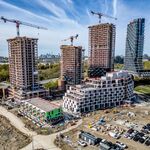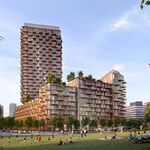BurlOak
Senior Member
But then the question becomes, if we are grade-separating a majority of the line, why not make it fully grade-separated and receive even more benefits.
But then the question becomes, if we are grade-separating a majority of the line, why not make it fully grade-separated and receive even more benefits.
My point exactly. It's about finding a balance between grade-separating the heaviest-trafficked areas to reduce conflicts, and keeping it on the surface elsewhere to keep down cost.Who pays for it?
The only grade separation is at the two termini. The vast majority of the line isn't grade-separated. Grade separating the majority of the line would cost $billions.But then the question becomes, if we are grade-separating a majority of the line, why not make it fully grade-separated and receive even more benefits.
Building an underground station rather than 2 surface stops is going to save money? I doubt it. Looks more like a plan of how to save money for the next phase.
The Humber stop would have likely been pretty large too, albeit not underground. You also have to take into account the extra track that now doesn't need to be laid. The underground station also looks pretty bare bones, and barely 1 level below ground.
My point exactly. It's about finding a balance between grade-separating the heaviest-trafficked areas to reduce conflicts, and keeping it on the surface elsewhere to keep down cost.
Is Humber Station even underground, or is it a trench?
I'd hope it's some kind of underground design. That would future-proof it for its eventual extension to the airport.Is Humber Station even underground, or is it a trench?
The Mississauga Transitway was partially built through a hydro corridor, and many of the more expensive features were cut, er, value-engineered out of existence. The busiest section, Rathburn Road at the City Centre Terminal, will be in mixed traffic (oh what fun on December weekends!). Much of it will be on highway shoulders because the stations and roadway were cut between Hurontario and Erin Mills Parkway. Ridership, so far, is poor. Surrounded by highways and hydro towers and the sound-proofed backyards of single-family homes, development opportunities aren't very promising.
I wouldn't cite the Mississauga Transitway yet.
The Mississauga Transitway was partially built through a hydro corridor, and many of the more expensive features were cut, er, value-engineered out of existence. The busiest section, Rathburn Road at the City Centre Terminal, will be in mixed traffic (oh what fun on December weekends!). Much of it will be on highway shoulders because the stations and roadway were cut between Hurontario and Erin Mills Parkway. Ridership, so far, is poor. Surrounded by highways and hydro towers and the sound-proofed backyards of single-family homes, development opportunities aren't very promising.
I wouldn't cite the Mississauga Transitway yet.
I'm not saying every part of the transitway + the operation is something to look up to... simply using it as an example of how the LRT can be sped up by dipping under roads where needed, but remain on the surface for most of the route. Finch isn't that dense that this would be impossible, and the ROW in most areas is wide enough that the roadway can be shifted to the south to allow for the LRT to operate in the North, where it would create the least amount of disruption.
Dip under the busiest intersections only, and stay on the surface for the smaller/less traveled ones.




